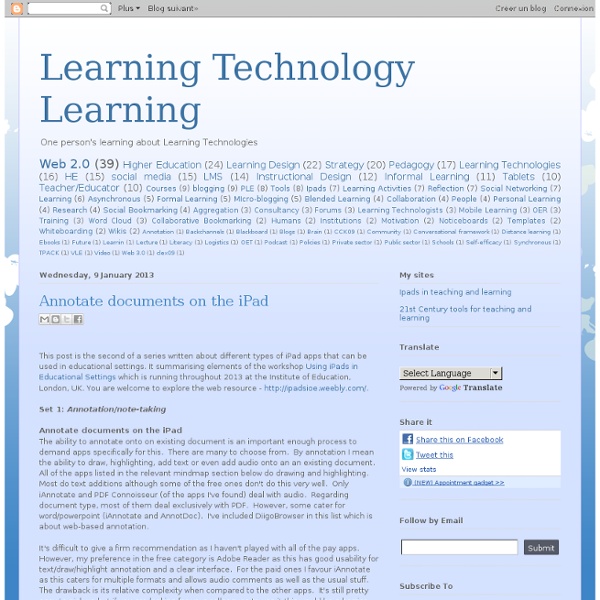



Classroom 2.0 Using Diigo in the Classroom - Student Learning with Diigo Diigo is a powerful information capturing, storing, recalling and sharing tool. Here are just a few of the possibilities with Diigo: Save important websites and access them on any computer.Categorize websites by titles, notes, keyword tags, lists and groups.Search through bookmarks to quickly find desired information.Save a screenshot of a website and see how it has changed over time.Annotate websites with highlighting or virtual "sticky notes."View any annotations made by others on any website visited.Share websites with groups or the entire Diigo social network.Comment on the bookmarks of others or solicit comments to your shared bookmarks. To learn more about how Diigo can be used as as information management tool, visit these pages: Diigo has clear advantages to the individual that needs to store and recall important information. Below are just a few options for using Diigo in the classroom. Personal Student Bookmarks Bookmark Lists Extended Learning Professional Development Research
Educational Technology and Change Journal Are We Wringing the Creativity Out of Kids? Do you think you’re creative?” Ask this question of a group of second-graders, and about 95 percent of them will answer “Yes.” Three years later, when the kids are in fifth grade, that proportion will drop to 50 percent—and by the time they’re seniors in high school, it’s down to 5 percent. Author Jonah Lehrer recently discussed the implications of these sobering statistics for education in his new book, Imagine: How Creativity Works. In a talk and question-and-answer session he participated in at the Commonwealth Club in Palo Alto, California, last month, Lehrer talked about why children lose their playful sense of creativity as they get older, and how we can help them hang on to it. Lehrer began by quoting Picasso: “Every child is born an artist. “Right now we are grooming our kids to think in a very particular way, which assumes that the right way to be thinking is to be attentive, to stare straight ahead.” Related
How Geniuses Think 109Share Synopsis Thumbnail descriptions of the thinking strategies commonly used by creative geniuses. How do geniuses come up with ideas? What is common to the thinking style that produced "Mona Lisa," as well as the one that spawned the theory of relativity? What characterizes the thinking strategies of the Einsteins, Edisons, daVincis, Darwins, Picassos, Michelangelos, Galileos, Freuds, and Mozarts of history? For years, scholars and researchers have tried to study genius by giving its vital statistics, as if piles of data somehow illuminated genius. Academics also tried to measure the links between intelligence and genius. Genius is not about scoring 1600 on the SATs, mastering fourteen languages at the age of seven, finishing Mensa exercises in record time, having an extraordinarily high I.Q., or even about being smart. Most people of average intelligence, given data or some problem, can figure out the expected conventional response. GENIUSES MAKE THEIR THOUGHTS VISIBLE.